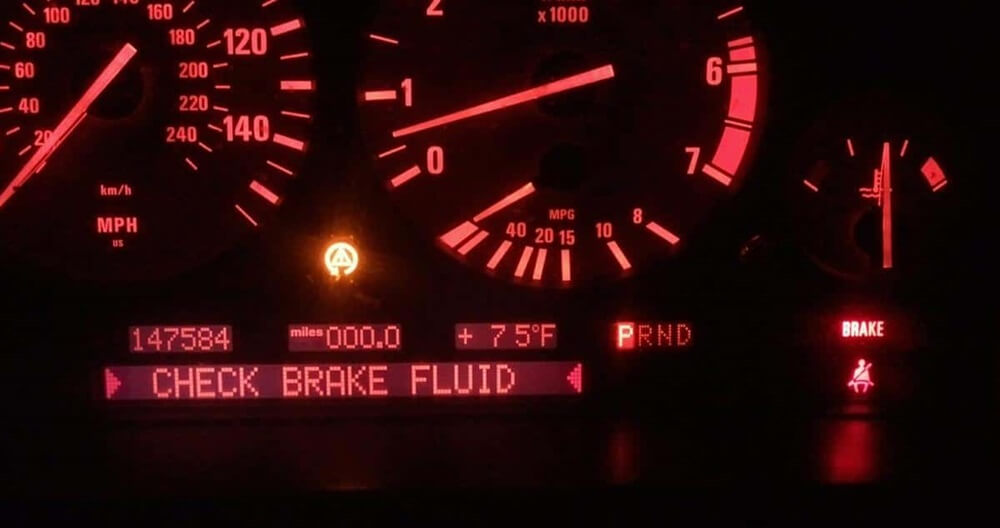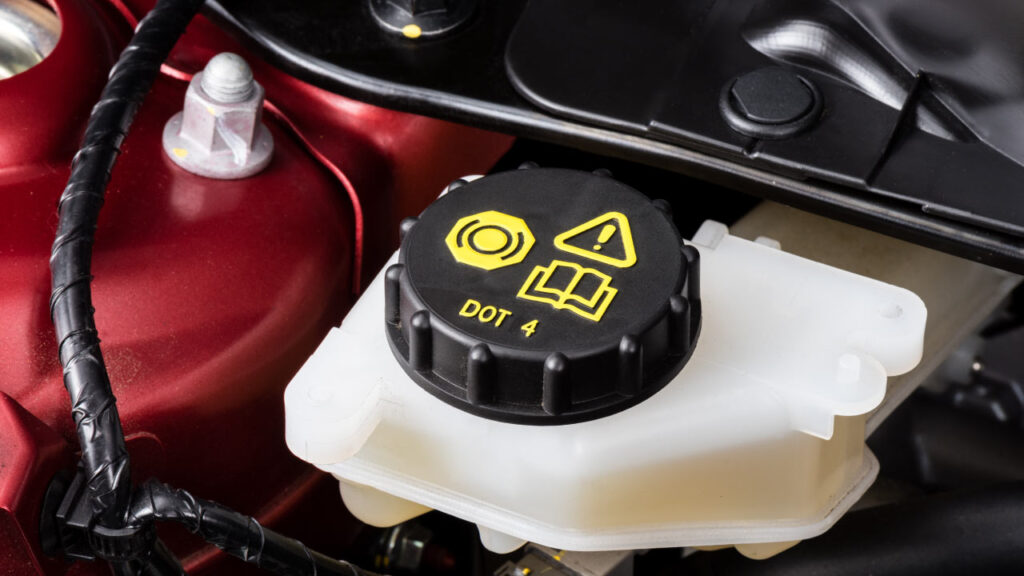People often overlook the importance of brake fluid in their car’s braking system. This fluid is used by the brakes to generate the pressure needed to stop your vehicle. When you press the brakes, the brake fluid presses the brake pads against the wheels to prevent them from turning. It’s hard to stop or slow down when you want to because this hydraulic power is lost when there is a leak or air in the brake fluid.
Warning signs that your brake fluid isn’t functioning right:
- It would help to stay alert as soon as the stop light is turned on.
- The brake pedal feels soft and squishy;
- the brake fluid looks low, dirty, or has a different color.
- It takes longer for your car to stop.
So, what happens if there is not enough fluid in the brake system? You definitely should instantly bring your car to the service center. Driving a car with faulty brakes can lead to a lot of damage. After carefully checking your brakes, our professionals will determine what’s wrong and fix it so you can drive safely again.

What Happens If The Brake Fluid Is Low?
So, how do I know if my car needs brake fluid? Watch out for these warning signs:
- Warning lights on the dashboard: If your brake or anti-lock braking system light is on, your brakes aren’t working right. Even if the fluid level isn’t low, it could mean something is wrong.
- Take a look at the brake fluid: Check its color. Be careful if it is low or not there at all. Instead, go to a gas station right away and seek assistance.
- Fluid Leaks: One of the main reasons for the low level is that brake fluid leaks. Even though they are harder to find, may indicate issues with the brake booster. External leaks create a dirty layer near the wheels.
- Altered Brake Pedal Feel: If the feel of your brake pedal changes, it could mean there isn’t enough brake fluid in it. Because of this, This can lead to decreased brake performance.
- Strange noises: Any strange noises you hear when you brake are caused by more friction. You need to have a professional look at it right away.
- Burning Smell: If your brakes smell hot, it could be because they don’t have enough brake fluid, making the brake pads heat up unevenly.
- Brake Wear Before It Should: If your brakes start screaming before they should, it could mean that the pads are wearing unevenly. The brake fluid pressure is probably too low.
- Car vibrations: If the brakes vibrate or rattle when applied, it’s essential to monitor the brake fluid level immediately to ensure you are safe.

Similar Posts:
- Parking Brake Malfunction
- Brake Discs Lipped Meaning
- Brake Pedal Is Stiff And Car Won’t Start
- What Happens If You Don’t Grease Brake Pads
- How Much Does Brake Pad and Rotor Replacement Cost?
Tips For Maintaining Brake Fluid
- Locate the Reservoir: Find the place where the brake fluid is stored. For the most part, you can find it in the engine bay near the driver.
- Check the Level: Locate the transparent line indicating “full.” It should be visible. Consult the manual for older cars.
- Evaluate the Quality of the Fluid: Use a tool to look at the color and consistency of the fluid. If it’s thick or dark, it’s time for a change. Instead, a brake fluid test kit that changes color might be helpful.
- Add the Fluid Carefully: Add the tank with the proper brake fluid. filling it gradually to avoid spills.
- Seal the tank: Screw the lid tight to lock the tank.
- Safety first: Keep it away from your eyes, skin, and car paint. After touching it, do the right thing and wash your hands.
Methods Of Filling Up Your Brake Fluid:
Locate the brake master cylinder’s tank.
- Remove Old Fluid: If you want to eliminate old brake fluid, you can use a vacuum pump.
- Refill with Fresh Fluid: Carefully pour the right amount of new brake fluid into the tank.
- Position Drain Pans: Start with the wheel farthest from the master cylinder and put a drain pan under each wheel. A brake bleeder kit can be useful here.
- Steps for Bleeding: Help press the brake button and release a bleeder valve. You might have to lift your car to get to these valves.
- Close and Test: The valve should be closed when the fluid flow slows down or no more air bubbles can be seen. Recheck the oil level, then release the brake on the car.
- Top Up if Needed: Add more brake fluid to the tank if necessary.
- Repeat as Necessary: Repeat this process at each wheel until the brakes are well-bled.
Conclusion
Brake fluid leaks, especially ones that come from the inside, could mean that something is wrong with parts inside your car, in addition to brake lines that are worn out or broken. If your brake fluid level is low, it could also mean that your brake pads need to be checked out and may be replaced.
Your mechanic should check the brake fluid and all the other fluids in your car as part of regular maintenance. Also, if your brake fluid is dirty or discolored, your brakes might need to be fixed.


![[Solution] Low Brake Fluid Symptoms: Signs You Shouldn’t Ignore Low Brake Fluid Symptoms](https://carstale.com/wp-content/uploads/low-brake-fluid-symptoms-1024x457.jpg)